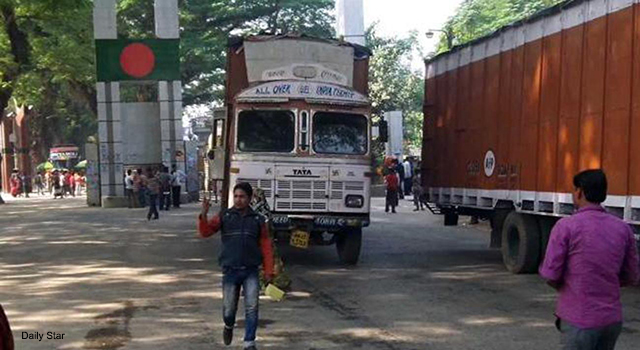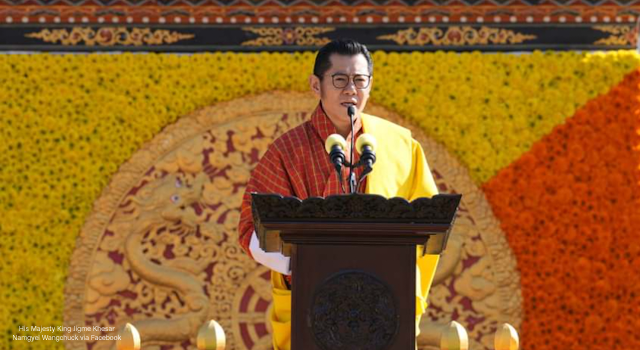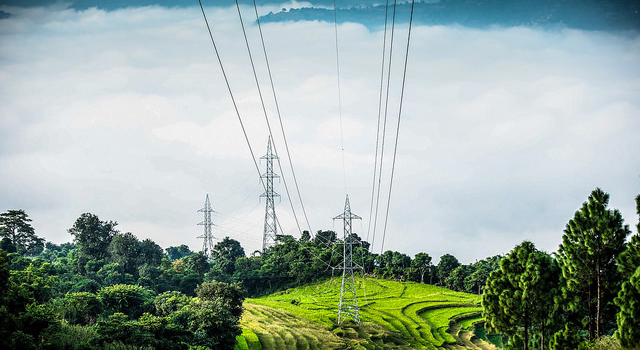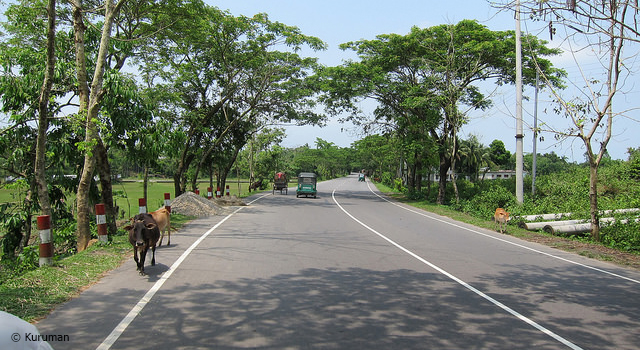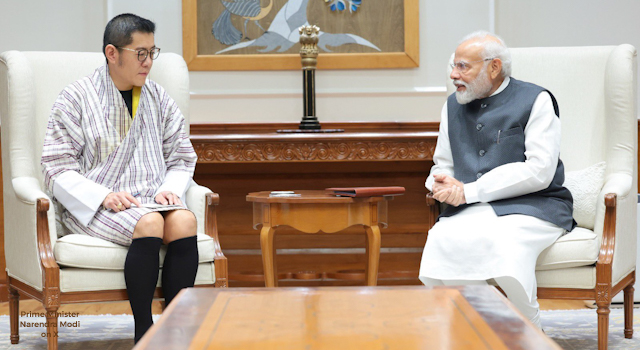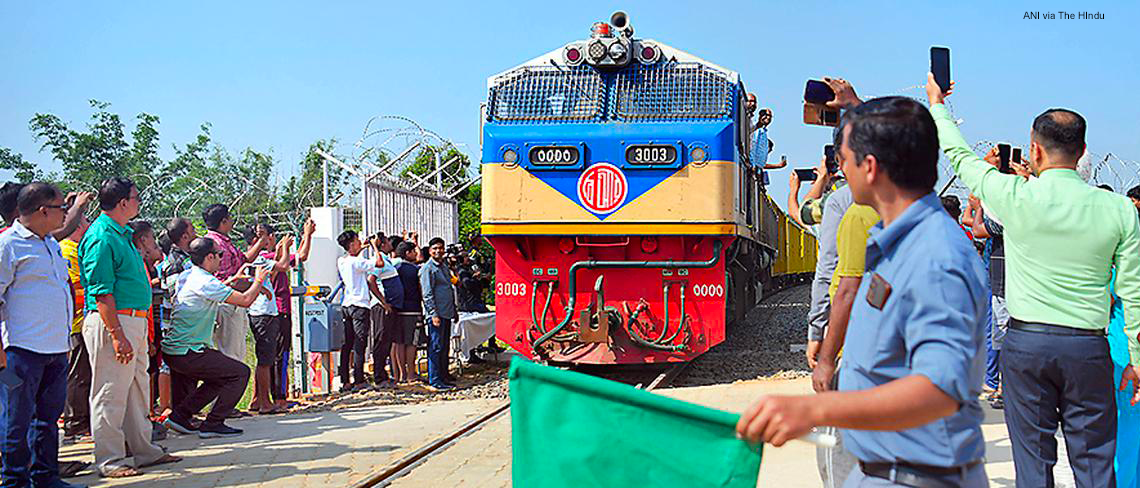
Commentary: SAARC Unites to Handle the Pandemic
24 March 2020
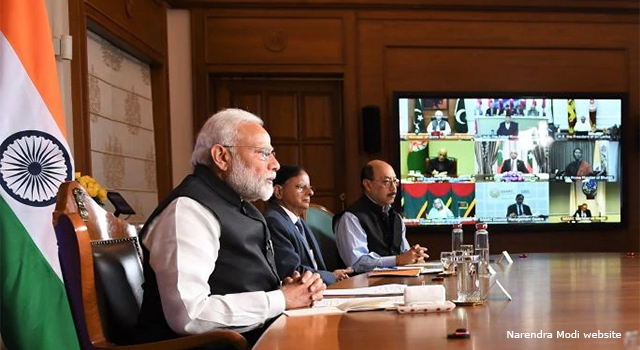
Member countries of the South Asia Association for Regional Cooperation (SAARC) held a Virtual SAARC Emergency meeting on COVID-19 on 15 March to discuss and coordinate a regional response. Mr. Sujit Bharti, a Diplomat at the Ministry of External Affairs of the Government of India, writes how South Asia is cooperating against the pandemic.
This piece originally was published in the Jakarta Post.
Together we can: SAARC shows how to handle the pandemic
Sujit Bharti
That an extraordinary situation warrants an extraordinary response is not merely a cliché. COVID-19 is the living example of this dictum. Every country is fighting its own battle to save the lives of its respective citizens, but the global pandemic cannot be disentangled from the global interdependence that has developed over the past decades.
If the world benefits from the movement of people, ideas, capital and technology, then it is imperative that we fight back against this disease with vigor. The danger of infection prevents us from making physical contact, but technology has empowered us with virtual and social networks.
SAARC (South Asia Association for Regional Cooperation) countries – Afghanistan, Bangladesh, Bhutan, India, the Maldives, Nepal, Pakistan, and Sri Lanka – came together on March 15, two days after Indian Prime Minister Narendra Modi proposed a Virtual SAARC Emergency meeting on COVID-19 to discuss and coordinate a regional response to the deadly outbreak.
It was heartening to see that in addition to Prime Minister Modi himself, Afghan President Ashraf Ghani, Bangladeshi Prime Minister Sheikh Hasina, Bhutanese Prime Minister Lotay Tshering, Maldivian President Ibrahim Mohamed Solih, Nepalese Prime Minister KP Sharma Oli and Sri Lankan President Gotabaya Rajapaksa participated in the video conference on such short notice. Due to the preoccupation of Pakistani Prime Minister Imran Khan, his special assistant on health, Zafar Mirza, attended the meeting.
SAARC, one of the most densely populated regions in the world, home to one fifth of humanity, has so far registered cases on the scale of three figures. Countries in the region face significant challenges in terms of access to overstretched healthcare facilities. Open borders in several sectors allow movement of people for pilgrimage, employment and fraternal ties, and closing the border is not an option because people, especially in border areas, would face difficulty obtaining basic goods.
Besides the global economic challenges, many countries face unique crises, like the Maldives’ economic dependence on tourism. Closer cooperation can help the region mitigate the severity of the impact.
The meeting brought forward new ideas embedded in the spirit of cooperation. President Ashraf Ghani’s proposal for a common telemedicine framework has the potential to bring sophisticated care to the remotest parts of the region. President Ibrahim Mohamed Solih proposed closer cooperation between countries’ respective health emergency agencies as well as the formulation of an economic relief package and a long-term recovery plan for the region.
President Gotabaya Rajapaksa recommended the establishment of a SAARC ministerial-level group to share best practices and coordinate regional efforts to combat COVID-19. Prime Minister Sheikh Hasina proposed the continuation of the dialogue at a technical level through video conferences between health ministers and secretaries of the region. Prime Minister KP Sharma Oli said that the collective wisdom and efforts of all the SAARC nations could help devise a robust and effective strategy to deal with the pandemic.
Prime Minister Lotay Tshering said the pandemic would affect smaller and vulnerable economies disproportionately. Zafar Mirza proposed that the SAARC Secretariat be given the mandate to establish a working group of national authorities for health information, data exchange and coordination in real time.
Being the largest member of SAARC, India has time and again emerged as the first responder in times of crisis, and the COVID-19 pandemic is not an exception. For dealing with this crisis, India’s guiding mantra has been “collaboration, not confusion; preparation, not panic”.
According to Prime Minister Modi, policymakers should “not underestimate the problem but also avoid knee-jerk reactions”. In this spirit, India has proposed a COVID-19 Emergency Fund (CEF) to meet the cost of immediate action and has offered an initial contribution of $10 million. A rapid response team of doctors and specialists in India, along with testing kits and other equipment, are on standby to assist neighboring countries.
Online training for emergency response teams, which India recently used to increase its own capacity in remote areas, can be used by neighboring countries as well. Using its strength of information technology, India has offered to share the Integrated Disease Surveillance Network for contact tracing and the management of the pandemic.
If even the world’s most developed countries can be humbled by the extent of the crisis and the paucity of resources, we can imagine what could happen in developing countries, which even under normal circumstances face a resource crunch in multiple areas.
It cannot be said definitely what will happen in the future, but India has left no stone unturned in taking proactive steps through a graded response mechanism at home. At the same time it has not shied away from doing what it can to support its neighbors and other countries in need in trying times.
India sent a rapid response team of experts to Male within hours of the country’s request for help along with sophisticated equipment for testing and screening people. Indian authorities also brought back foreign nationals trapped in areas vulnerable to COVID-19 from various countries, including Bangladesh, Maldives, Myanmar, Nepal, and Sri Lanka.
Welcoming common understanding, a common strategy and assuring its partners that specific requests will be replied to, Prime Minister Modi has requested the nomination of an expert from each partner for further cooperation and has said that “we have to fight this battle together, and we have to win it together. Our neighborhood collaboration should be a model for the world.”
Related link:
India PM Narendra Modi interacts with SAARC leaders to combat COVID-19 in the region



